| From the Air: A City Under Water |
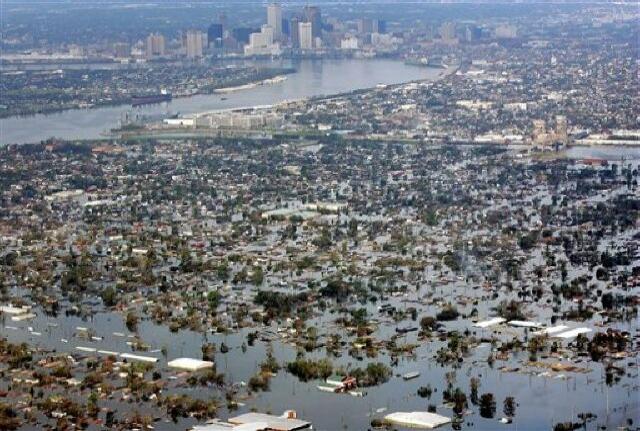
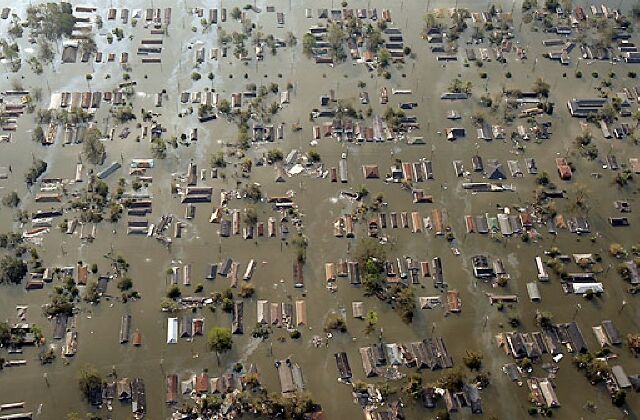
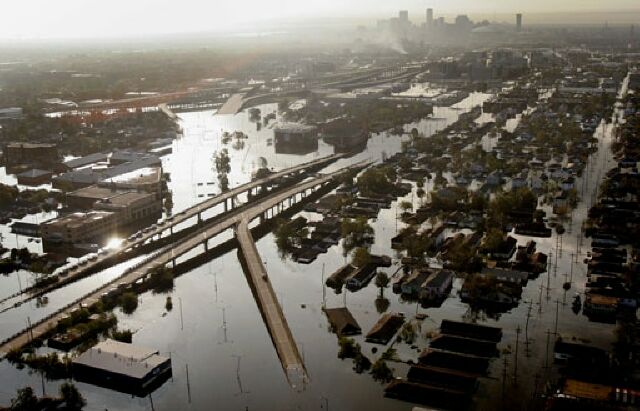
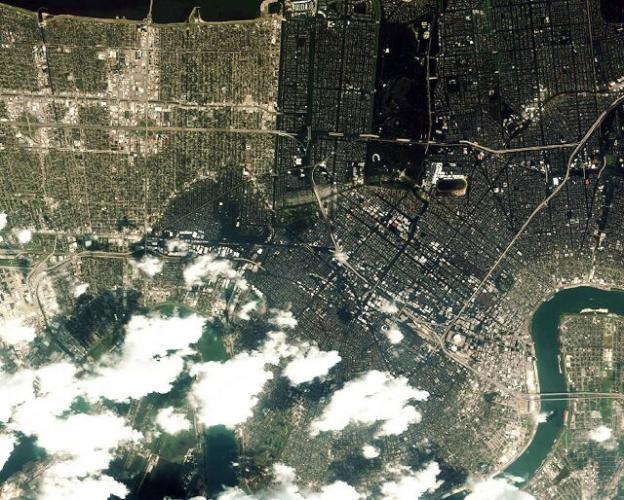
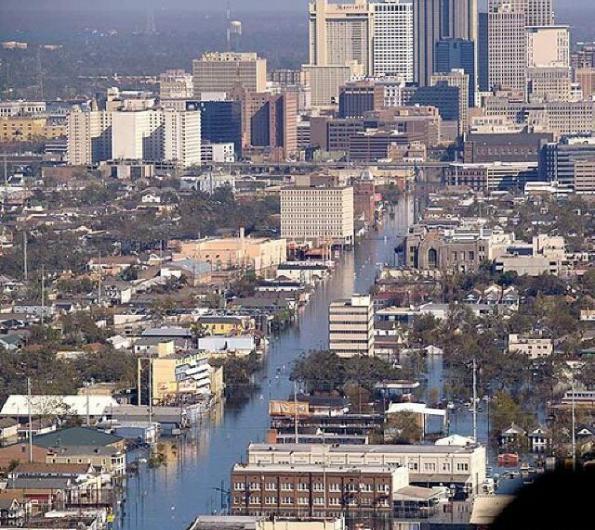
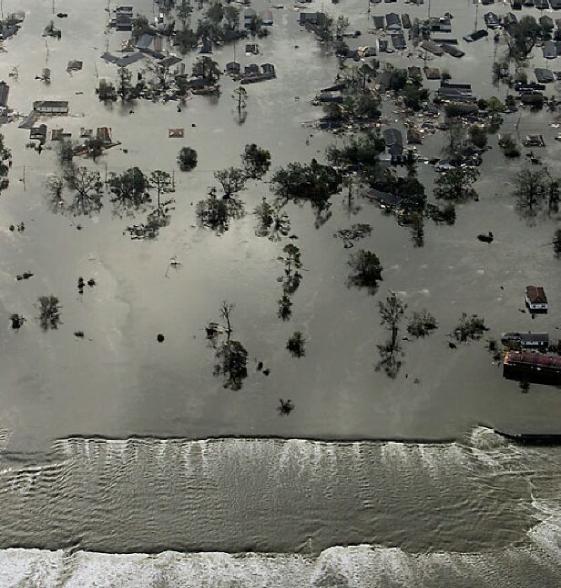
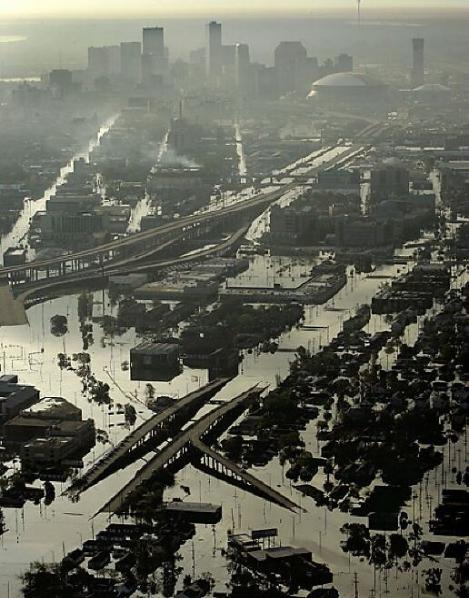
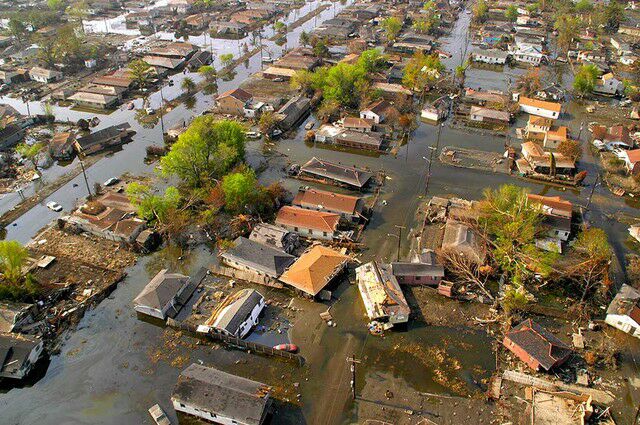
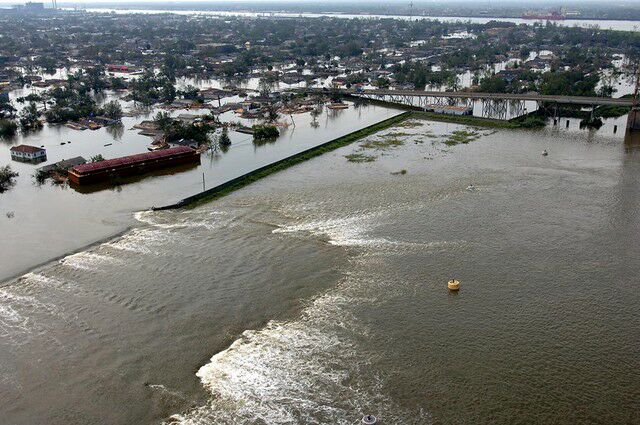
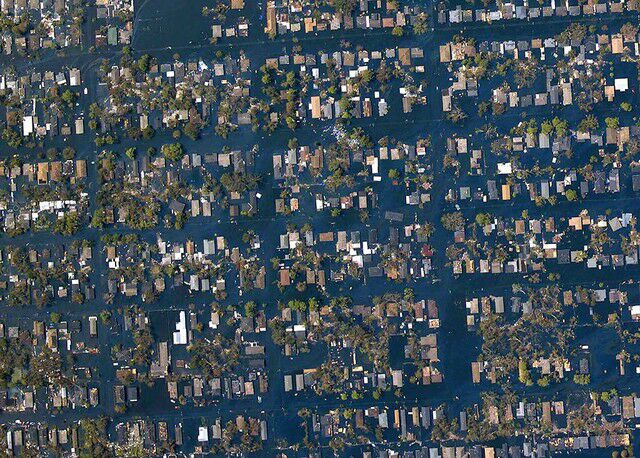
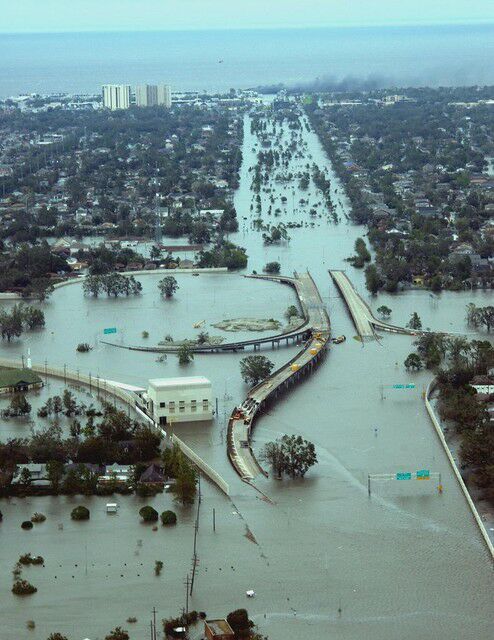
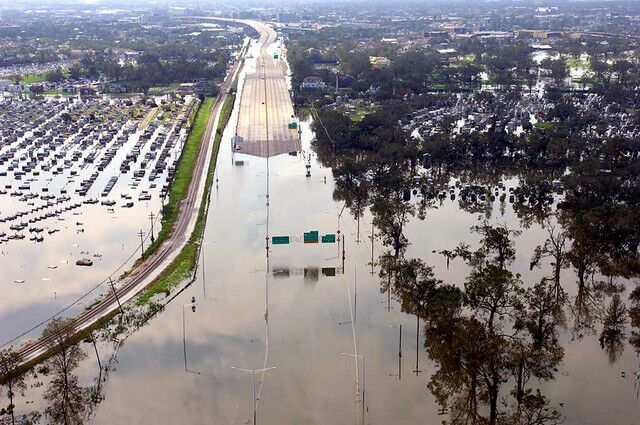
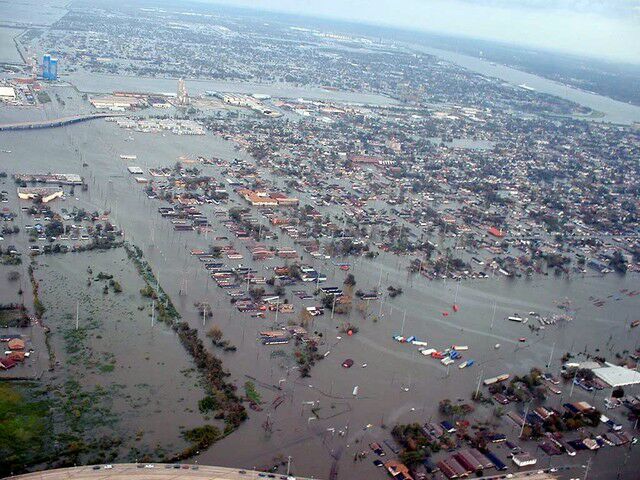
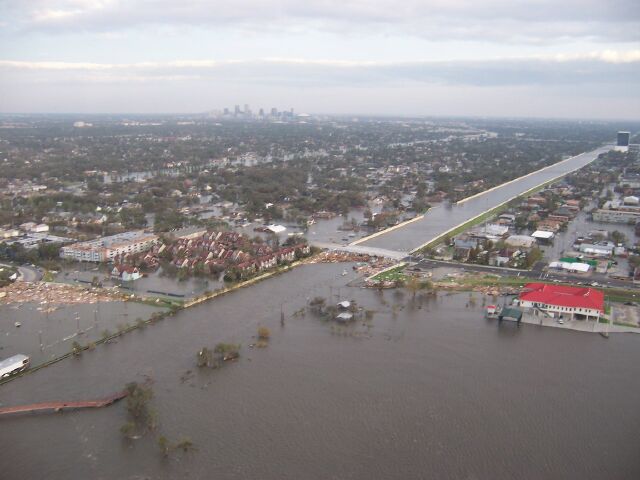
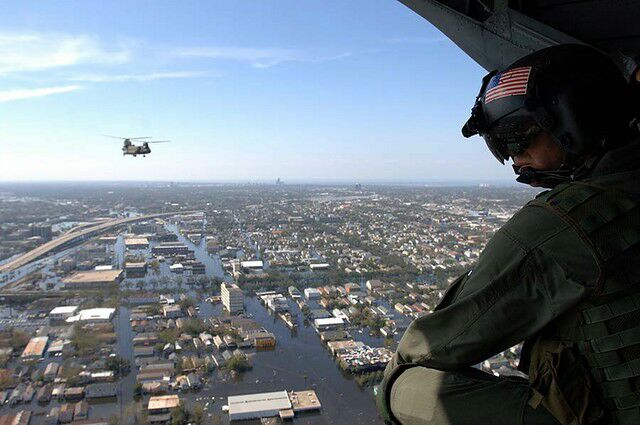
| The satellite photo tells the story. The 17th Street canal is the boundary between Orleans Parish and Jefferson Parish. It's easy to note the location of the canal. To the left of the 17th Street canal, Jefferson Parish is dry. To the right of the canal, the city of New Orleans is submerged in Lake Pontchartrain's waters. The two floodwalls of the canal did a deadly dance, each about to bend and fail...the Orleans side failed first, relieving the pressure on the Jefferson side and sparing Jefferson Parish from New Orleans' fate. Also, notice the "sliver by the river" of dry ground in New Orleans, the highest area of the city runs parallel to the Mississippi River. ~ ~ ~ |
During the interminable days and nights after the levees failed, we were situated directly in the flight
path of the helicopters based at Keesler Air Force Base on the Gulf Coast, which were going back and
forth to New Orleans on rescue missions. All day, and half the night, they flew overhead. The sound
of those helicopters was a constant reminder of the struggle between life and death taking place just
45 miles away. The roar was near deafening, also, a little nerve-wracking. But it was comforting, as
well. As long as the choppers flew, we knew that there were people whose lives might still be saved.
There aren't enough good words to say about the Air National Guard and others who flew those
rescue missions. They are heroes of the highest order. The city was without lights. They were
supposed to stop flying at dusk, because conditions--visibility, number of aircraft in the area,
etc.--were too dangerous to fly after dark. But they kept flying. They were supposed to log only a
certain numbers of hours in the air and take a break. But they kept flying. The reason was clear. As
one New Orleans fireman, who was doing rescues by boat, said afterward, "It's hard to remember the
faces of the people I saved...but I'll never forget the faces of those begging for help that I couldn't
reach." That's why the helicopters kept on going into the night. What a burden it must've put on them
to finally halt their missions at night, knowing there would be people who wouldn't make it until
morning.
I can't remember now how long it lasted. At the time, it seemed as if the sound of those helicopters
would never end. But, it did. And, when it did, we knew that it was because the focus was shifting
from the search for survivors, to the search for bodies.
And, with that realization, the sound of the silence overhead became deafening. -- Nancy
path of the helicopters based at Keesler Air Force Base on the Gulf Coast, which were going back and
forth to New Orleans on rescue missions. All day, and half the night, they flew overhead. The sound
of those helicopters was a constant reminder of the struggle between life and death taking place just
45 miles away. The roar was near deafening, also, a little nerve-wracking. But it was comforting, as
well. As long as the choppers flew, we knew that there were people whose lives might still be saved.
There aren't enough good words to say about the Air National Guard and others who flew those
rescue missions. They are heroes of the highest order. The city was without lights. They were
supposed to stop flying at dusk, because conditions--visibility, number of aircraft in the area,
etc.--were too dangerous to fly after dark. But they kept flying. They were supposed to log only a
certain numbers of hours in the air and take a break. But they kept flying. The reason was clear. As
one New Orleans fireman, who was doing rescues by boat, said afterward, "It's hard to remember the
faces of the people I saved...but I'll never forget the faces of those begging for help that I couldn't
reach." That's why the helicopters kept on going into the night. What a burden it must've put on them
to finally halt their missions at night, knowing there would be people who wouldn't make it until
morning.
I can't remember now how long it lasted. At the time, it seemed as if the sound of those helicopters
would never end. But, it did. And, when it did, we knew that it was because the focus was shifting
from the search for survivors, to the search for bodies.
And, with that realization, the sound of the silence overhead became deafening. -- Nancy
| This photo was taken by Dr. Jim Arey. |